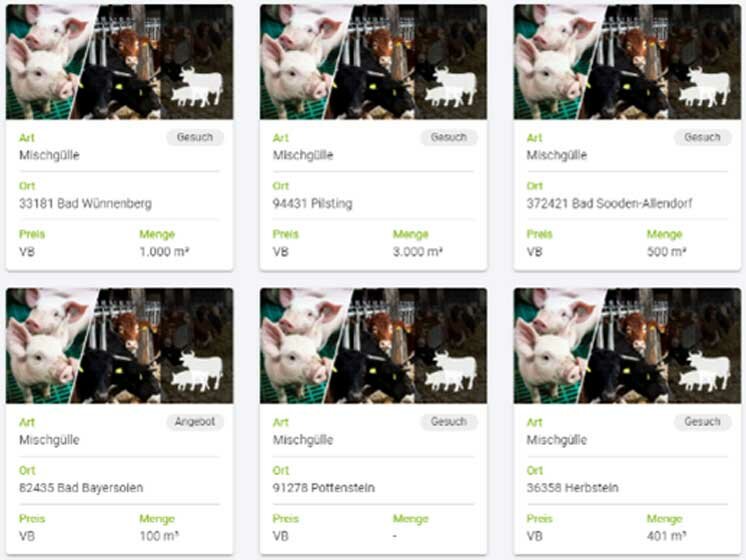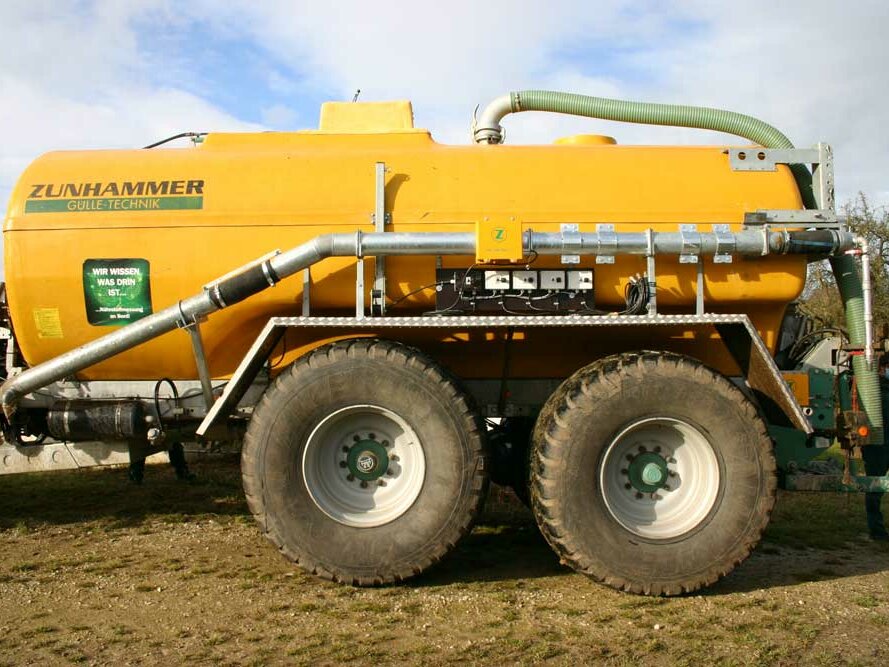Well mixed: Slurry from cattle and pigs
By Dr Frank Volz, DLG Test Center Technology and Farm Inputs
What do mixed farms that keep cattle and pigs, agricultural contractors and farms that rely on rented slurry storage capacity have in common? In all cases, there may no longer be any "pure" slurry in the slurry store.
The fact is that the problem of mixed manure exists in practice with a certain relevance. Of course, a mixed farm will not build two separate storage systems to separate, for example, the slurry from dairy farming and that from a few fattening pigs for direct or regional marketing. And if storage capacities become scarce on a farm thanks to the increasingly strict regulations of the Fertiliser Ordinance, the farm will use the nearest possibility to rent a slurry storage facility for reasons of - more cost-effective - transport logistics alone, regardless of what type of slurry may still be in that storage container. After all, mixing manure of different origins is allowed. At the end of the chain, if necessary, is the contractor who has been entrusted with the removal and spreading of such mixed manure and who - assuming appropriate technical equipment and the legal requirements in the federal state - has also promised to provide the documentation of the spreading quantities per hectare for the fertiliser balance in the field or the total quantities spread for the material flows of the farm gate balance.
However, with the increasing mechanisation of manure spreading, contractors in particular have a key role to play: only specialised contractors achieve the necessary capacity utilisation for the associated high investment costs and are thus in a position to implement pioneering technical solutions earlier than farms that mechanise themselves. Incidentally, those who achieve the necessary efficiency through large-scale and modern technology can in return also minimise possible adverse effects on the non-agricultural rural population. This applies to the traffic pollution caused by the logistics chain as well as to a significantly reduced odour nuisance to the surrounding area due to slot and injection methods.
Politics plays along
So far, the German states of North Rhine-Westphalia and Schleswig-Holstein recognise the quantities of ingredients measured and recorded by NIR sensors during the application of liquid manure as documentation in the context of obligations under the Fertiliser Ordinance. Although other federal states are still reluctant to do so, the positions are obviously not irrevocable at both federal and state level. In fact, in individual cases in the discourse between the state governments and parliaments, reference is made to the fact that DLG-tested NIR sensors cannot yet record all the necessary measured values with sufficient accuracy to be able to replace the laboratory standard methods. Implicitly included in this are also mixed soils, as they place special demands on the measuring ranges of the sensors or the calibration models on which their results are based.
Mixed slurry in practice
Regardless of the method of analysis, the inhomogeneity of the slurry is the fundamental problem in determining its contents. In the case of mixed slurry, this problem is even greater. It could be that the slurry batches can be mixed worse than they already are because of the differences in dry matter content. Mixtures of cattle and pig slurry have the greatest practical relevance, so that the DLG Testing Commission has decided to produce these itself as a test series in the defined mixing ratios 90:10 / 70:30 / 50:50 / 30:70 / 10:90. In practice, this is relatively easy to implement when changing the measuring equipment from a cattle to a pig farm by gradually diluting the cattle slurry in the sample container with pig slurry.
Sensors successfully tested
With the Van-Control 2.0 from Zunhammer (DLG test report 7138) and the Assy LMS 20-NIR sensor from Topcon Precision Agriculture (DLG test report 7141), two NIR sensor systems have already successfully met the more stringent test conditions of the extended DLG test framework and - in addition to cattle and pig slurry and liquid fermentation residues - have also been DLG APPROVED for the determination of ingredients in mixed slurry. Specifically, in both cases the values for dry matter, total nitrogen, phosphate and potassium oxide were sufficiently accurate according to the DLG evaluation scheme.
More information
- DLG test report 7138 for Van-Control 2.0 from Zunhammer and
- DLG test report 7141 for Assy LMS 20-NIR sensor from Topcon Precision Agriculture.







